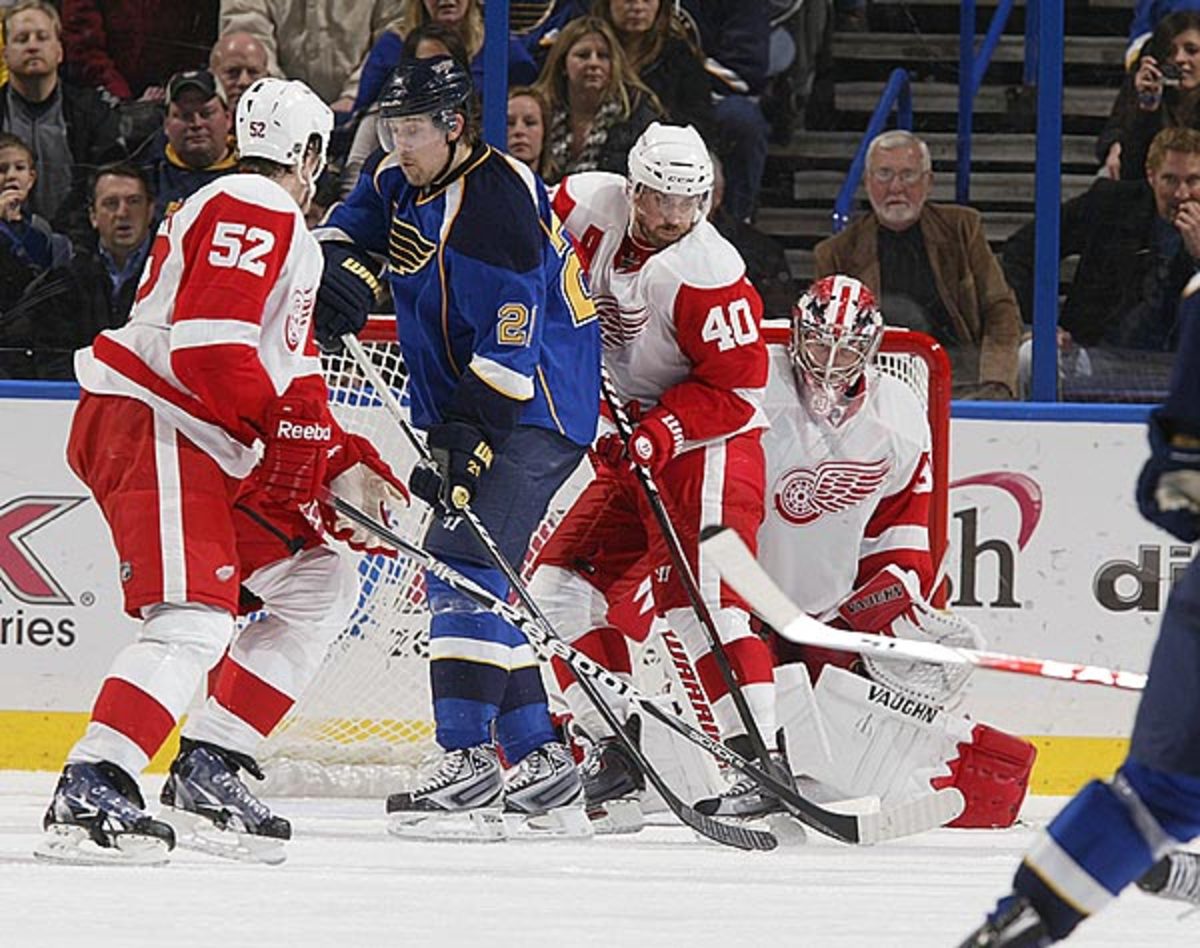Is the long NHL season causing injuries?
The Blues and especially the Red Wings are among several NHL teams that have had to soldier on in the wake of injuries to their key players this season. (Mark Buckner/NHLI via Getty Images)
By Stu Hackel
Every season, teams get hit with injuries. They're a fact of life in the NHL. But they seem to be increasing in length and severity and some teams are particularly hard hit. Adam Proteau of The Hockey News thinks he knows why: The season is too long with too few breaks.
"We’re seeing the results of a compressed 82-game schedule," Proteau writes in his blog. "We’re seeing the toll of meaningless pre-season games and playoffs that stretch into mid-June. We’re seeing the consequences of training demands placed on players from their early teens right through their final professional game.
"And as a result of that, we’re seeing more and more American League players on NHL ice rinks and asking fans to pay NHL prices to see them. Can you imagine if Gary Bettman gets his way and expands the league by two teams in the near future? We very easily could be watching ECHL players jumping up on a regular basis."
For Proteau, the initials NHL stand for National Hurting League. And it does seem as if the collective list of injured is starting to look like this famous scene from Gone With the Wind of the Confederate dead and wounded in the Atlanta rail yard (minus the inappropriate Brady Bunch soundtrack in the linked clip).
For some teams, like the Red Wings, Canadiens and Rangers, injuries have hit a cluster of their top players. The Blues, Islanders, Avalanche and Devils have also had key players out for extended periods. For other teams, like Anaheim, which has been without Ryan Getzlaf since December, the plague of injuries to stars hasn't been as extensive, but whether it's a top tier player or a depth guy, it's still a troubling situation.
Is Proteau right? Hard to say. Just as the NHL believes the increase in concussions is the result of the faster pace and harder collisions that occur now with the game having opened up, the apparent rise in all injuries could be a result of the post-lockout rules.
When a player like the Avalanche's Tomas Fleischmann is sidelined for the season by a pulmonary emboli, a condition in which a blood clot lodges in the lung, it may have nothing to do with the physicality of the NHL, at least not directly. Fleischmann had problems with blood clots earlier this season when he still was with the Capitals. But there are limits to what the human body can endure. The stresses of the long schedule and the intense training, which is now virtually year-round for NHL players, must be seriously considered as potential factors in the mounting toll of injuries. Are players getting enough rest and recovery time?
Proteau suggests a few remedies, staring with the elimination -- or at least the whittling down -- of the preseason exhibition schedule. "At present, teams play as many as nine exhibition games before the regular season begins; that’s a brazen money grab for the owners and a waste of time and energy for players who are physically fit all year round," he writes.
That's true, although those games do help teams make decisions on which bubble players are ready for the NHL.
Proteau also advocates a reduction of the regular season by 10 percent, or eight games. But he recognizes that these adjustments are "long-shots, because team owners (who hold the real power for change) are loathe to give up their 46 percent of revenues in those games."
Proteau is not the first person to advocate a shorter NHL season. But he may have the best reason.

































